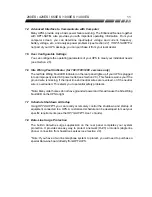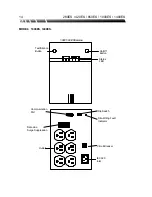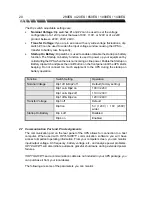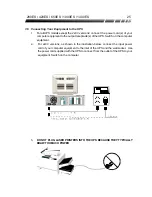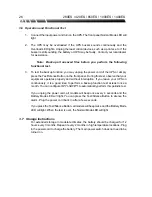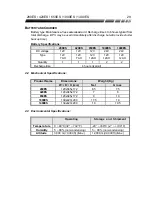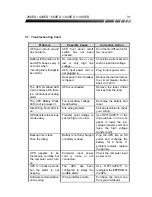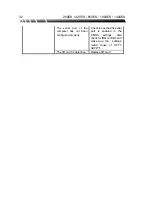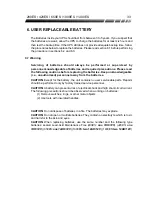
280ES / 420ES / 650ES / 1000ES / 1400ES
21
Input Voltage
Indicates the actual input voltage to the UPS when AC
power is present
Output Voltage
Indicates the actual output voltage of the UPS
AC Frequency
Indicates the actual output frequency of the UPS
Battery Voltage
Indicates the actual DC voltage of the UPS battery
Change Battery
Indicates that the battery is dead and needs to be replaced
Percent Load
Indicates the percentage of UPS Voltage-Ampere (VA)
capacity being utilized by your equipment
Temperature
Indicates the actual temperature inside the UPS
The Enhanced Series also supports software which relies on basic “contact closure
signals” such as the built in UPS Service in Windows NT (you will need to purchase a
special cable for this type of application). The major functions of this type of software
normally include the following:
•
To broadcast a warning when power fails.
•
To close any open files before the battery reserves are exhausted.
•
To turn off the UPS.
Note: You can connect your computer to your UPS without also connecting to the
communication port. In this case, your UPS warns you of a power failure by beeping, but
you have to manually shut down your UPS and computer.
Pin Assignments:
PIN1
Not connected.
PIN2
UPS simulates a relay closing between pin 2 and pin 4 when input power
fails.
PIN3
Not connected.
PIN4
Common for pin 2 and pin 5.
PIN5
UPS simulates a relay closing between pin 5 and pin 4 when the battery
inside the UPS has less than 2 minutes backup time left.
PIN6
User sends a RS232 high level (
5-15V
) for 3 secs. This signal will turn off
the UPS until proper input voltage returns. It can operate only if UPS is in
battery mode. This pin is also used as the RS232 receiver pin (
RXD
).





